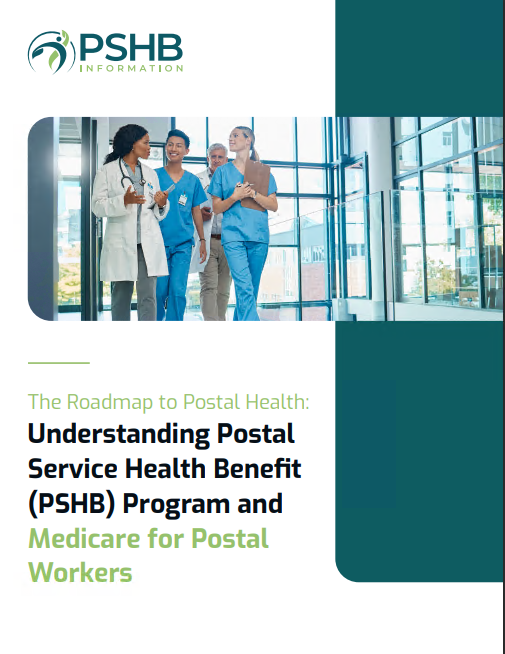Key Takeaways:
- Maximize Your Health Coverage: Get to know your options during PSHB Open Season and learn what’s best for your unique health needs.
- Avoid Future Surprises: Reviewing and choosing the right PSHB plan can prevent unexpected costs or coverage gaps down the line.
Understanding the PSHB Open Season
The Postal Service Health Benefits (PSHB) Open Season is just around the corner, giving postal workers and retirees a unique window to assess and update their health coverage for the coming year. The Open Season runs from November 11 to December 9, offering an opportunity to review health plans and make changes to fit your needs for 2025. By doing a bit of homework now, you can avoid potential surprises and set yourself up for a year with the right level of coverage and support. This article breaks down what you need to know about PSHB Open Season and provides tips for navigating the process smoothly.
Why Should You Consider Changing Your Health Plan?
Healthcare needs evolve over time, so the health plan that was a perfect fit last year might not be the best choice now. During PSHB Open Season, you can:
- Adjust to Life Changes: If you’ve had a significant life event like a change in family size, a new diagnosis, or changes in health conditions, it might be time to adjust your coverage.
- Address Financial Goals: Plan costs change annually. Open Season is a chance to make cost-effective choices that align with your budget.
- Stay Informed on New Plans and Benefits: PSHB plans might offer additional perks, wellness programs, or expanded networks that could make a difference in your health journey.
What to Expect with the PSHB Program Transition
The PSHB program is designed specifically for postal workers and replaces the previous FEHB coverage starting in 2025. The good news is, if you’re already enrolled in an FEHB plan, you’ll be automatically enrolled in a similar PSHB plan, so you won’t lose coverage. However, automatic enrollment might not align with your ideal plan choice or budget, so it’s still wise to review the options available.
Tip: Even though your transition to PSHB is automatic, make sure to double-check the details and consider whether to make a proactive switch to a different plan.
Breaking Down the Types of Plans Available
1. High Deductible Health Plans (HDHPs)
HDHPs can offer lower premiums and pair with a Health Savings Account (HSA). While these plans have higher deductibles, they’re ideal if you’re in good health and expect lower medical expenses. Contributions to an HSA are tax-free, which can make an HDHP financially advantageous.
2. Standard Coverage Plans
Standard plans offer balanced premiums with moderate deductibles and out-of-pocket costs. This plan type is popular for those who want predictable monthly premiums without a high deductible but still want to avoid paying extra for comprehensive or specialty plans.
3. Comprehensive and Premium Plans
If you or a family member requires frequent doctor visits, specialized care, or prescription medications, these plans can help reduce your out-of-pocket costs, though premiums are typically higher. Comprehensive plans are suitable for those who value extensive coverage and are willing to pay a bit more for peace of mind.
Tip: Consider how often you or your dependents need medical care to choose the right balance between monthly premiums and out-of-pocket costs.
Things to Keep in Mind Before Choosing Your PSHB Plan
Assess Your Health Needs
Take a moment to evaluate any upcoming medical needs. Look into things like:
- Expected Medical Visits: Do you expect regular visits, specialist care, or specific treatments? These may impact the ideal deductible and co-pay structure.
- Current Prescription Needs: If you or your dependents rely on medications, consider plans with good prescription drug coverage and lower out-of-pocket caps for medications.
- Family Size and Ages: Younger families might find lower-premium plans attractive, while older family members may prefer more comprehensive coverage due to increased healthcare needs.
Calculate Total Costs
When comparing PSHB plans, it’s helpful to break down costs into two main categories:
- Monthly Premiums: While lower premiums save money upfront, they may mean higher out-of-pocket costs when accessing care.
- Deductibles and Co-Pays: High deductibles mean more out-of-pocket expenses until your coverage kicks in, so consider how much you expect to use medical services.
Review Your Provider Network
Another key factor is whether your preferred doctors and healthcare providers are in-network. Using an out-of-network provider generally means paying more, so check if your plan covers your provider, or look for options that do.
Tip: Most plans offer online tools to help you verify if a particular provider is covered. It’s worth checking this before you sign up.
What If You’re Medicare-Eligible?
Some Postal Service retirees who are Medicare-eligible may need to enroll in Medicare Part B to maintain their PSHB coverage. If you retired before January 1, 2025, and aren’t enrolled in Part B, you may be exempt from this requirement. For retirees who are affected, enrolling in Part B can offer additional benefits when paired with PSHB, but it’s important to weigh the additional premium against your healthcare needs.
Navigating PSHB Enrollment During Open Season
1. Review Automatic Enrollment Notices
If you’re currently enrolled in an FEHB plan, you should receive a notice detailing your automatic enrollment in a comparable PSHB plan. Read it carefully to ensure that it meets your needs.
2. Research Your Options Early
Explore plan details on the PSHB website as soon as Open Season starts. Taking the time to review information in advance can give you a clearer understanding of the benefits, limitations, and costs of each plan.
3. Consider Using Decision-Making Tools
PSHB offers tools to help you evaluate and compare available plans. These tools can help you sort plans based on factors like monthly premiums, out-of-pocket costs, and network coverage, making the decision process easier.
Tip: Enter your projected healthcare needs into the decision-making tool to see which plan could potentially save you the most money.
Enrollment Deadlines and Tips for a Smooth Process
Open Season runs for a limited time, so be sure to complete any changes by the December 9 deadline to ensure your plan goes into effect on January 1, 2025. Here are some tips for a hassle-free enrollment experience:
- Start Early: Open Season can get busy toward the end, so reviewing and finalizing your choice early ensures you’re not rushing.
- Double-Check Deadlines: Missing Open Season means waiting until the next year unless you qualify for a Special Enrollment Period.
- Save Copies of Your Enrollment Confirmation: Keeping a record of your plan selection can help if you need to clarify coverage details later.
Frequently Asked Questions (FAQs)
What happens if I don’t make a change during Open Season?
If you’re satisfied with the automatically assigned plan, you don’t need to take any further steps. However, it’s always a good idea to double-check the benefits and costs.
Can I change my PSHB plan after Open Season?
Changes outside of Open Season are generally limited to qualifying life events, such as marriage, divorce, birth, or moving. Without one of these events, you’ll need to wait for the next Open Season to make a switch.
Will my dependents’ coverage change?
As long as they meet the eligibility criteria, your dependents can remain covered under your PSHB plan, though some plans may have different costs or benefits depending on family size.
Ensuring Peace of Mind for the Year Ahead
Taking the time to make an informed decision during PSHB Open Season can make a big difference in your overall healthcare experience. Whether you prioritize lower monthly costs, comprehensive coverage, or a mix of both, reviewing your options ensures you and your family have the support you need. Don’t miss the chance to align your coverage with your health and financial goals as we transition to the PSHB program in 2025.











